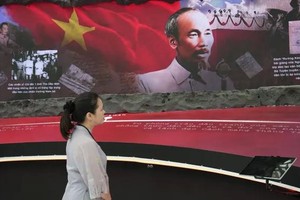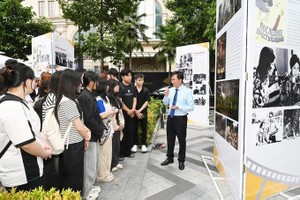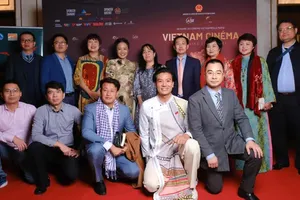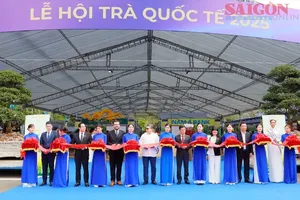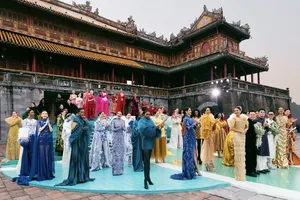Living in such a space enriches people spiritually—through the inherited values of their land—and materially, as heritage contributes to economic development.
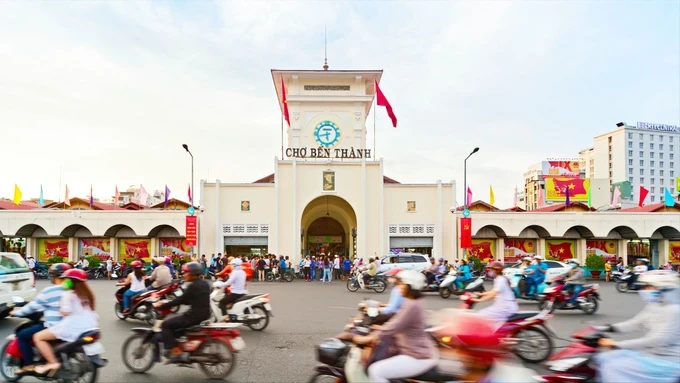
Urban cultural heritage, specifically understood as an assemblage of sites, districts, communities, artifacts and traditions that a society inherits from its predecessors, desires to maintain and transmit to next generations.
The urban heritage system of Saigon - Ho Chi Minh City showcases a collection of relics and structures that illustrate the city's cultural evolution and development, encompassing 10 categories that span from prehistoric times to the mid-20th century.
Ho Chi Minh City is home to 10 distinctive heritage categories worthy of recognition. The first classification encompasses two varieties of archaeological vestiges (subterranean and surface-level), comprising a network of over 30 archaeological sites from the prehistoric and early historical epochs, dating approximately 3,000-2,000 years in antiquity, alongside locations bearing remnants of the Oc Eo Culture era from the Phu Nam kingdom.
These antiquities remain concealed beneath the earth, unearthed and examined through methodical archaeological excavations. This classification predominates in Thu Duc City and the mangrove ecosystem zone of HCMC's Can Gio outlying district. Can Gio houses a nationally designated historical-cultural monument, Giong Ca Vo. In District 8, the Hung Loi ancient ceramic furnace remnant exemplifies the renowned Saigon pottery settlement of the 18th-19th centuries.
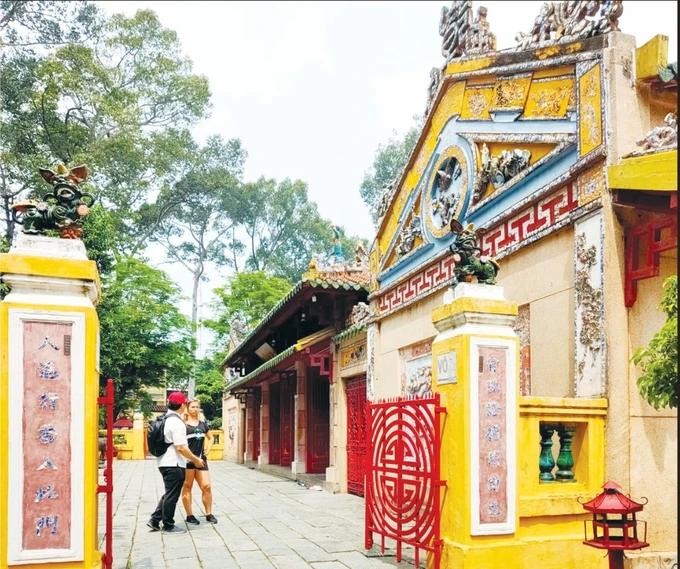
Regarding urban landscape, the landscape characteristics of the central Saigon urban area are based on two main factors such as river urban area (Saigon River, Ben Nghe canal) and Western-style urban area (main roads perpendicular or parallel to the river, canal forming a chessboard). The central area has administrative and commercial service functions with suitable architectural styles.
Some landscapes such as Bach Dang Wharf, Nguyen Hue roundabout, Ben Thanh Market roundabout, Dong Khoi Street, Ton Duc Thang are typical of Saigon urban landscape heritage.
The landscape of the central area is considered the urban appearance in terms of planning, architecture, and at the same time reflects the history and culture of that urban area.
In many countries, urban landscapes are areas that are always focused on preservation to preserve urban history and culture, thereby developing heritage economy and tourism economy very well. Regarding the type of architectural works, Ho Chi Minh City has a number of office buildings, cultural and educational buildings concentrated in District 1, District 3, District 5 reflecting the architectural characteristics of Saigon from the mid-19th century to the mid-20th century.
Meanwhile, many religious and belief works including temples, communal houses, mausoleums, shrines, churches, assembly halls, churches, cathedrals reflect the diversity of origins and cultural harmony of residential communities in the historical process of the city.
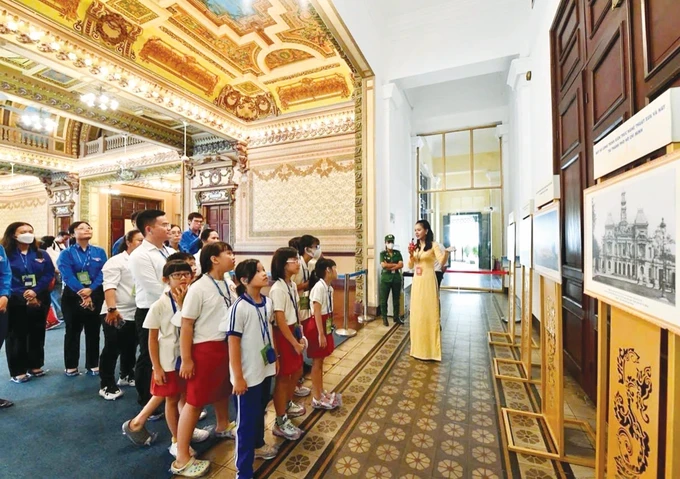
In terms of residential architecture, the predominant housing types in the historic Gia Dinh area reflect the cultural heritage of both Vietnamese and Chinese communities. These include traditional homes and structures blending Eastern and Western architectural styles. Notable among them are old houses featuring French colonial architecture integrated with garden landscapes and traditional interior design. Surrounding the city center are residential areas characterized by Western-style villas, complete with gardens and designs adapted to the tropical climate.
Regarding urban and industrial infrastructure relics, Saigon is the place where industrial facilities serving the urban area were formed quite early, such as power plants (lighthouses), water supply systems; Then there were some industrial establishments such as Ba Son Factory (from the Nguyen Dynasty's waterworks), the rice milling factory system along Binh Dong Wharf, and the port system.
All of these reflected an urban area with an early industrial foundation, a strong trade and service economy, followed by Ho Chi Minh City - the economic locomotive of the country.
For the type of burial relics, mausoleums, the Gia Dinh - Saigon area is the place where the number of tombs of the Nguyen Dynasty Royal Family and high-ranking mandarins are concentrated.
Among the national historical and cultural relics of Ho Chi Minh City, there are 4 relics of the ancient tomb type, typically the Le Van Duyet Tomb or also known as Ong Ba Chieu Tomb, Binh Thanh District.
For the citadel relics, the earliest citadel in Saigon was Luy Ban Bich (in 1772). Gia Dinh - Thanh Quy Citadel (in 1790) was built by Lord Nguyen Anh according to the European model. In 1835, King Minh Mang demolished and built a smaller citadel to the northeast of the old citadel. In particular, the complex of Chinese relics in the Cho Lon area has contributed to the cultural diversity of the Gia Dinh region.
The Cho Lon area is a complex of many types of architectural relics that clearly reflect the culture, lifestyle, and beliefs of the Chinese people. The typical type is the temple relics (also known as assembly halls, communal houses, pagodas) belonging to many different Chinese community groups.
Furthermore, the urban landscape of Cho Lon is characterized by a variety of architectural works, including public, civil, religious, and commercial structures.
In Ho Chi Minh City, cultural heritages have gone through a long period of time without being fully recognized by people for their values, due to the influence of traditional and foreign cultural prejudices.
Historically, urban cultural heritage was often undervalued and inadequately preserved due to a lack of resources and challenging socio-economic conditions. However, over the past decade, there has been a significant increase in community awareness and appreciation for cultural heritage, driven by academic research, literature, and various governmental policies. A key feature of cultural heritage is its irreplaceability; unlike other economically valuable assets, it cannot be reproduced. Therefore, the economic significance of cultural heritage should be understood in a comprehensive context.
Although the economic benefits of cultural heritage may not be immediately visible, they must be harnessed strategically—like any other resource—to ensure sustainable development. Successful models from various cities and countries show that preserving the landscape surrounding heritage sites is key to maintaining their architectural, artistic, historical, and cultural value. When heritage is embedded within a well-preserved landscape, it not only enhances the area's aesthetic and cultural significance but also elevates the value of the broader region.
Leveraging cultural heritage also involves revitalizing public spaces to host community activities, which helps transmit the meaning and values of heritage to residents. These spaces foster a sense of identity and continuity, embedding cultural heritage into the collective memory. In addition, heritage-based development stimulates local tourism, crafts, cultural events, and festivals—turning even everyday community lifestyles into cultural assets. This process can boost real estate values in heritage areas by attracting visitors and encouraging the growth of tourism-related services. Ultimately, residing in such areas becomes a marker not only of material affluence but also of enriched cultural awareness.
Conserving the significance of metropolitan historical assets serves as an approach to constructing contemporary urban environments with physical infrastructure that maintains living spaces rich in historical and cultural recollections. Protecting cultural legacies enables current and future generations to experience enhanced and more dignified living conditions.


